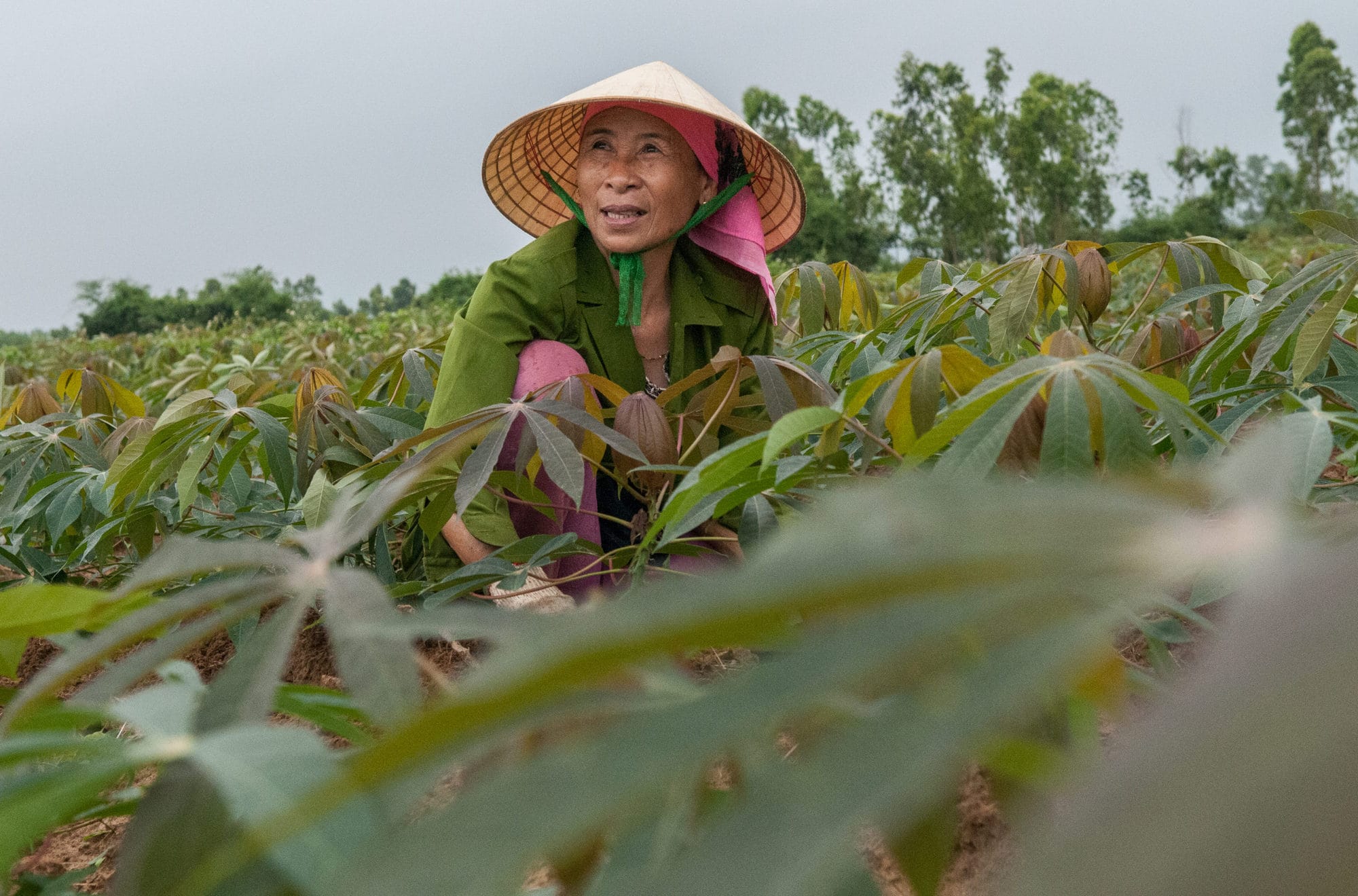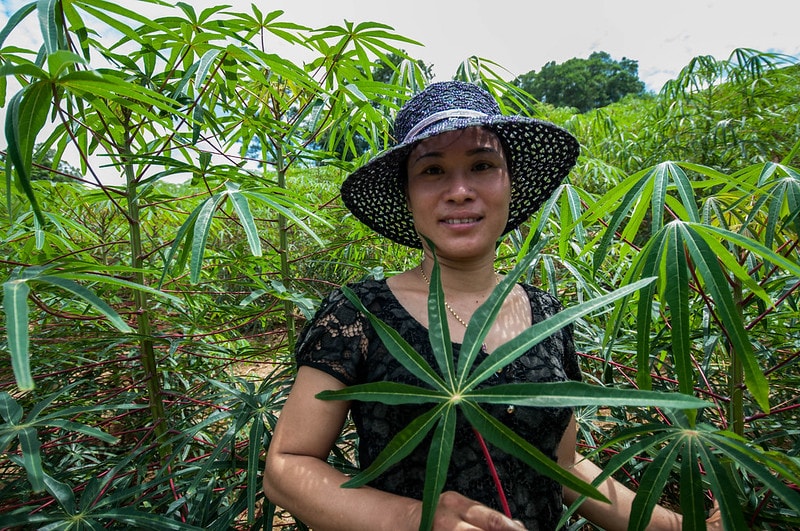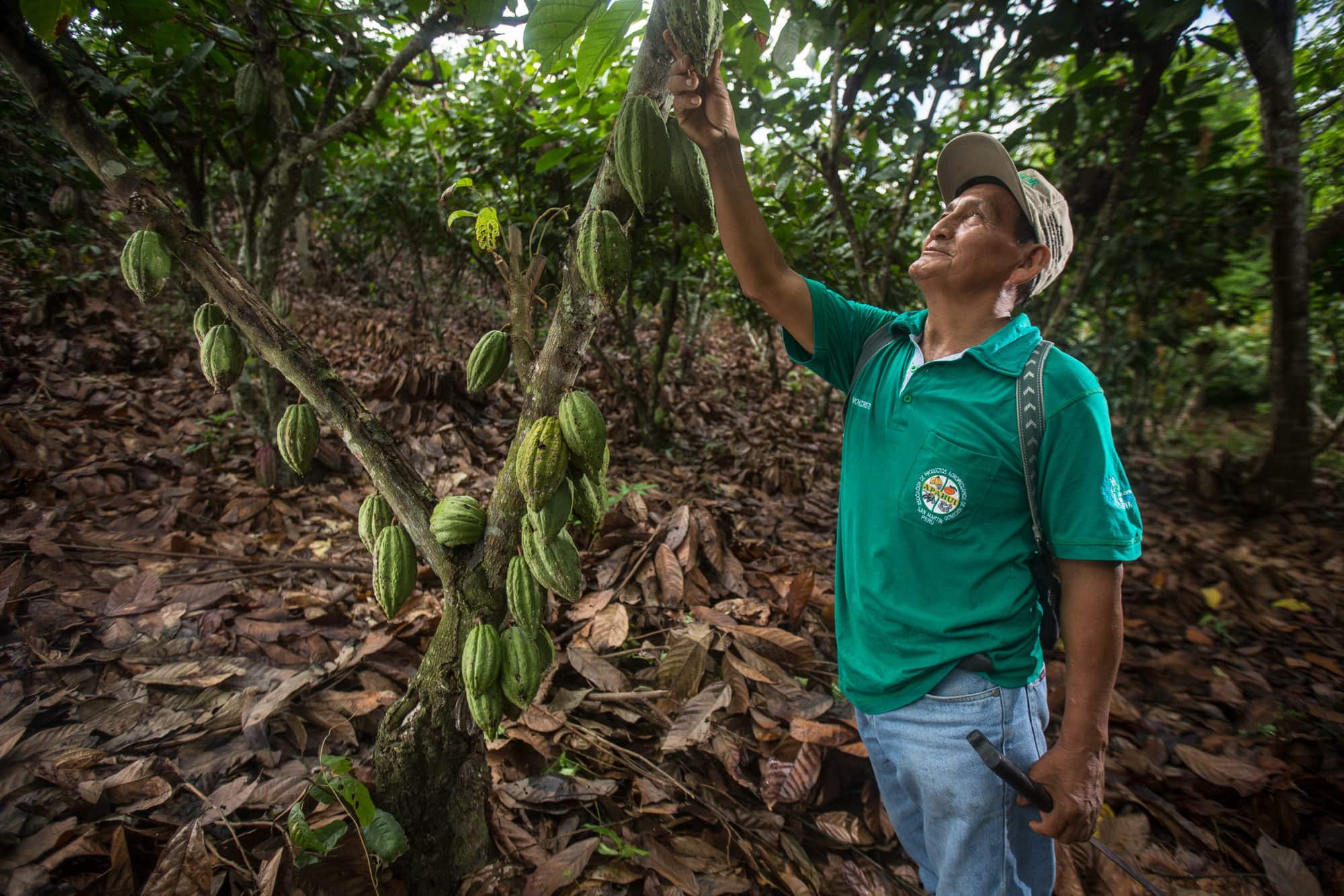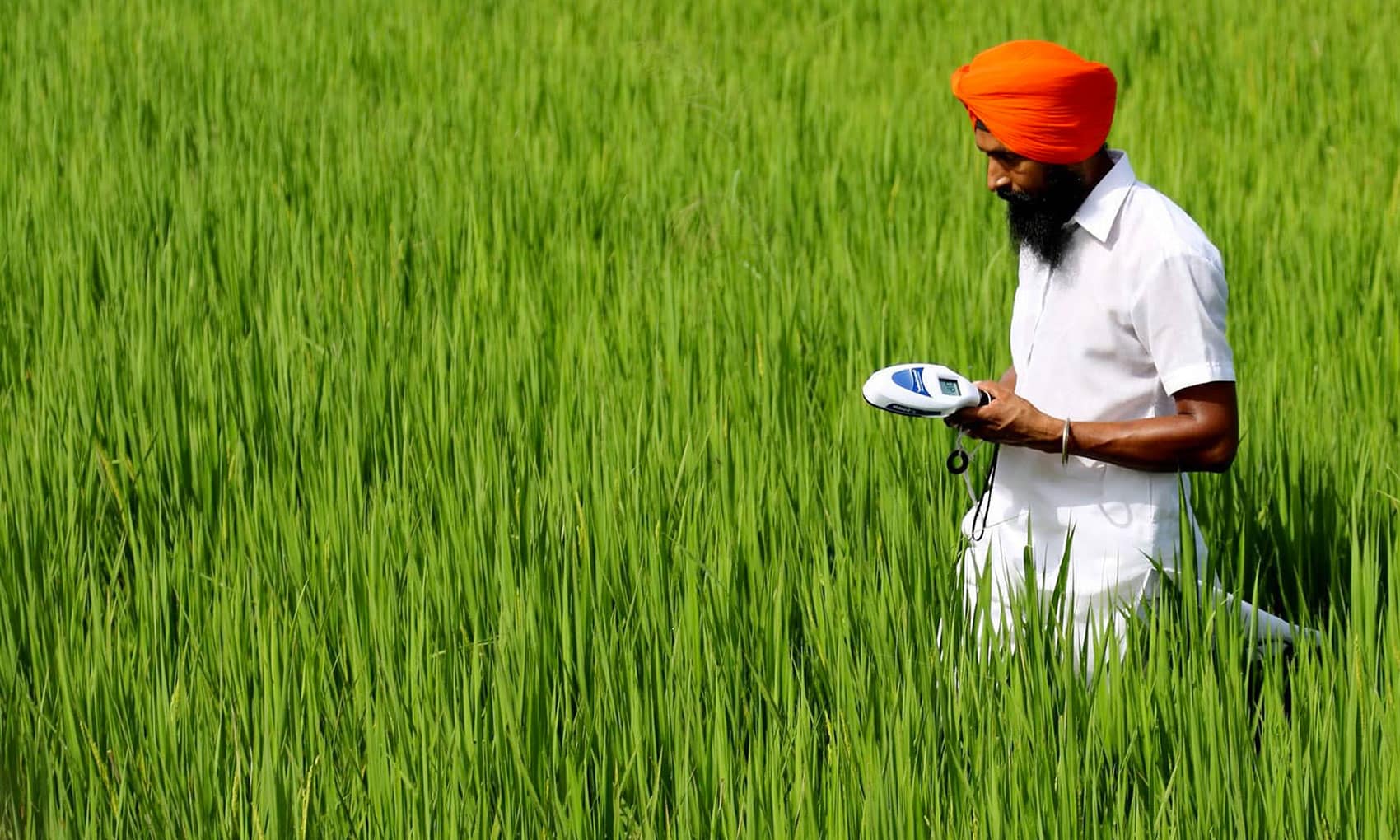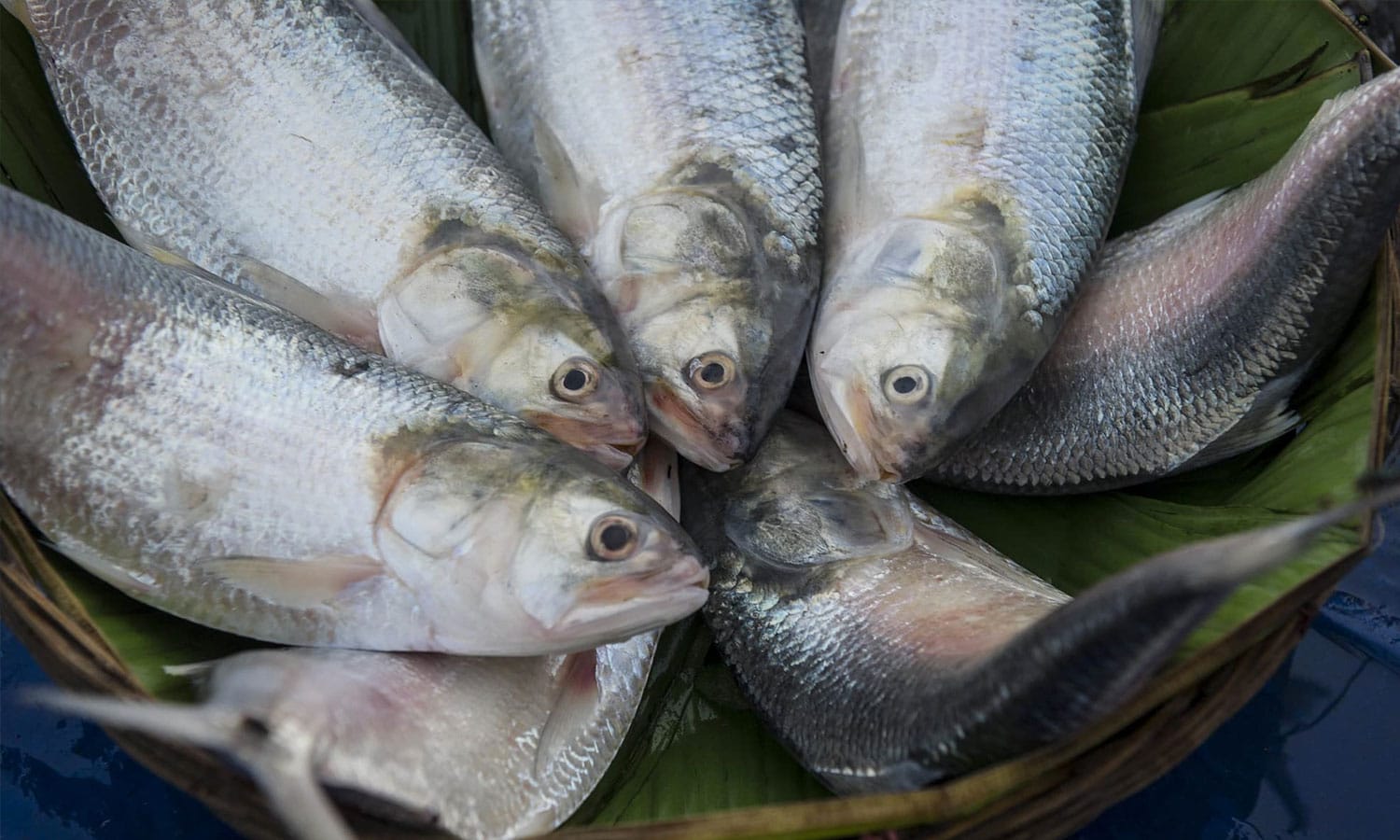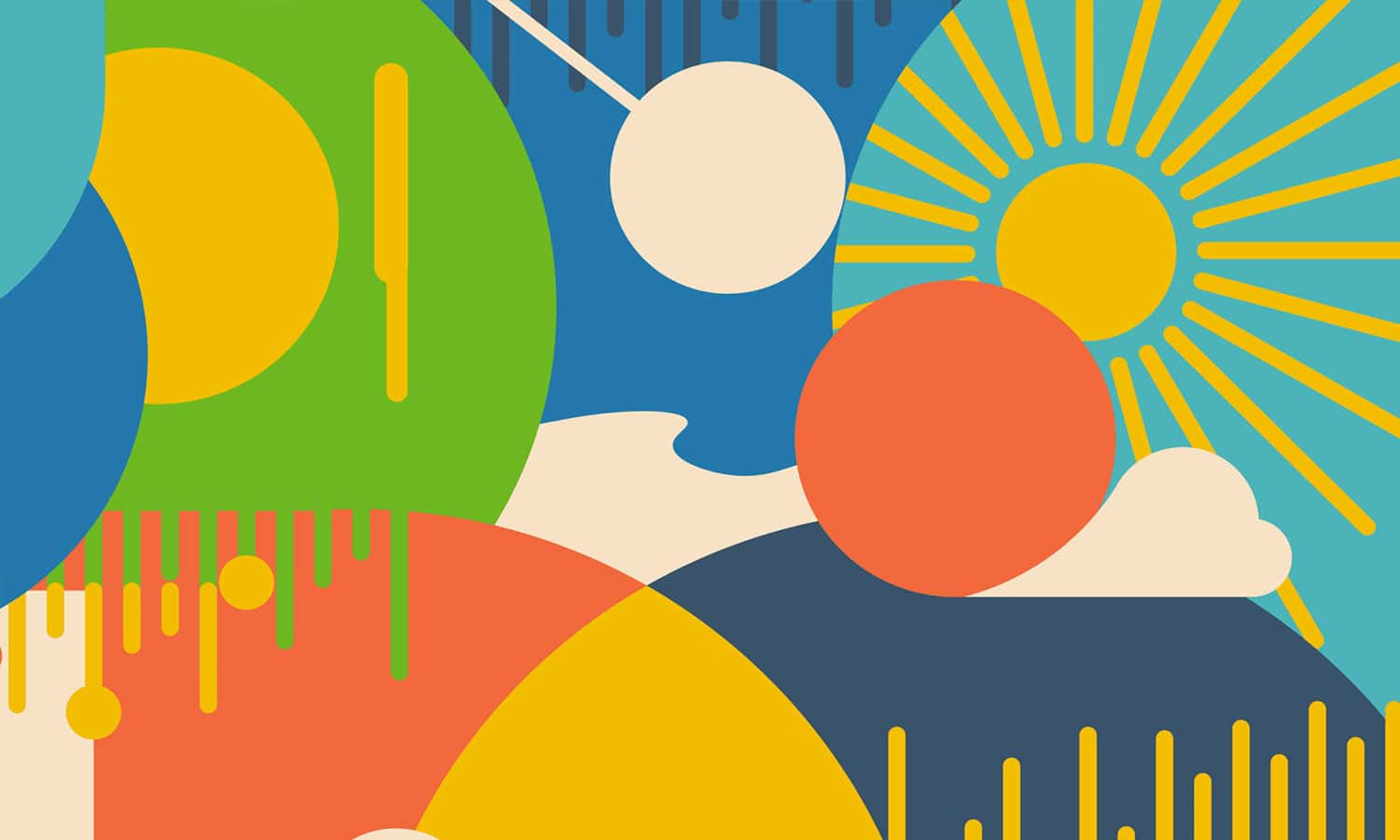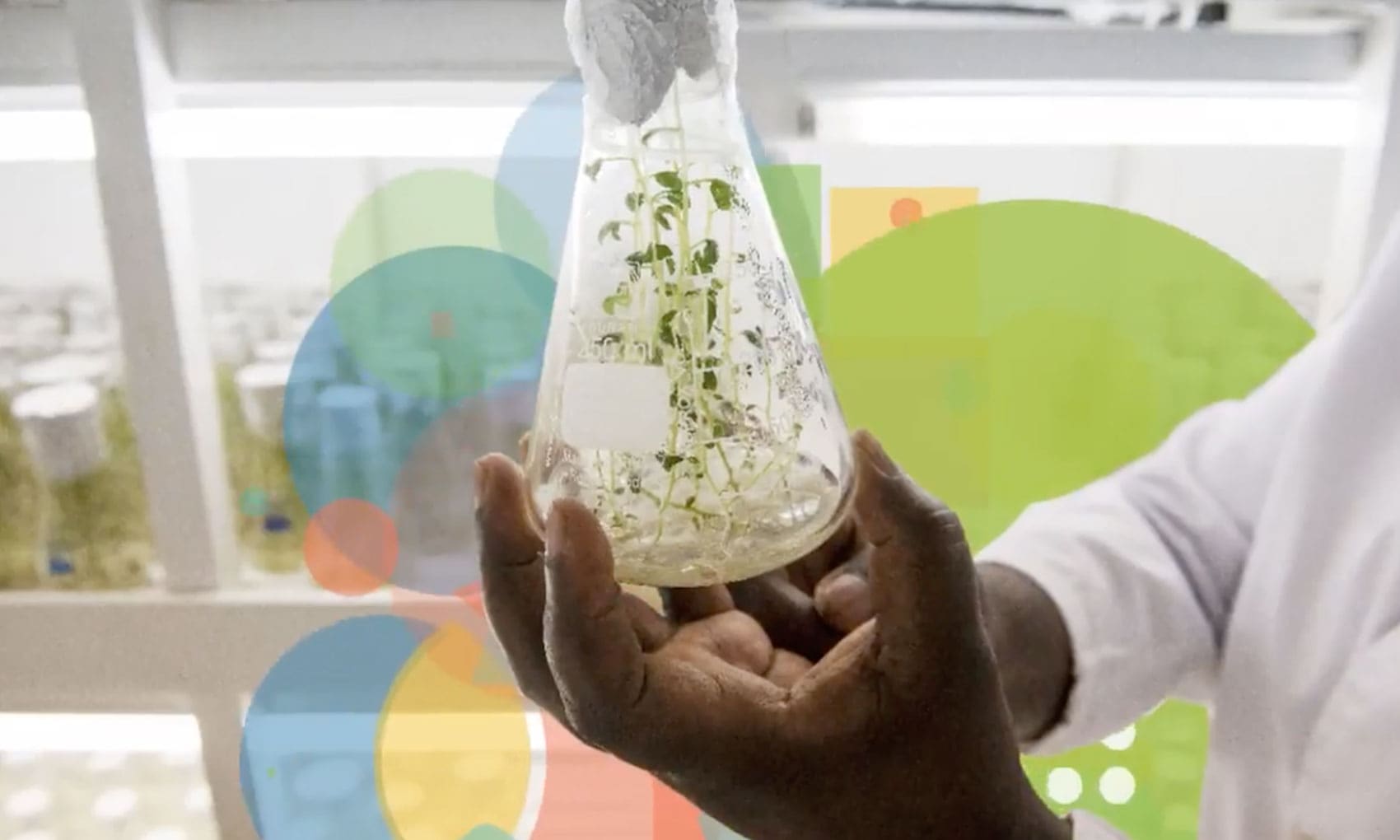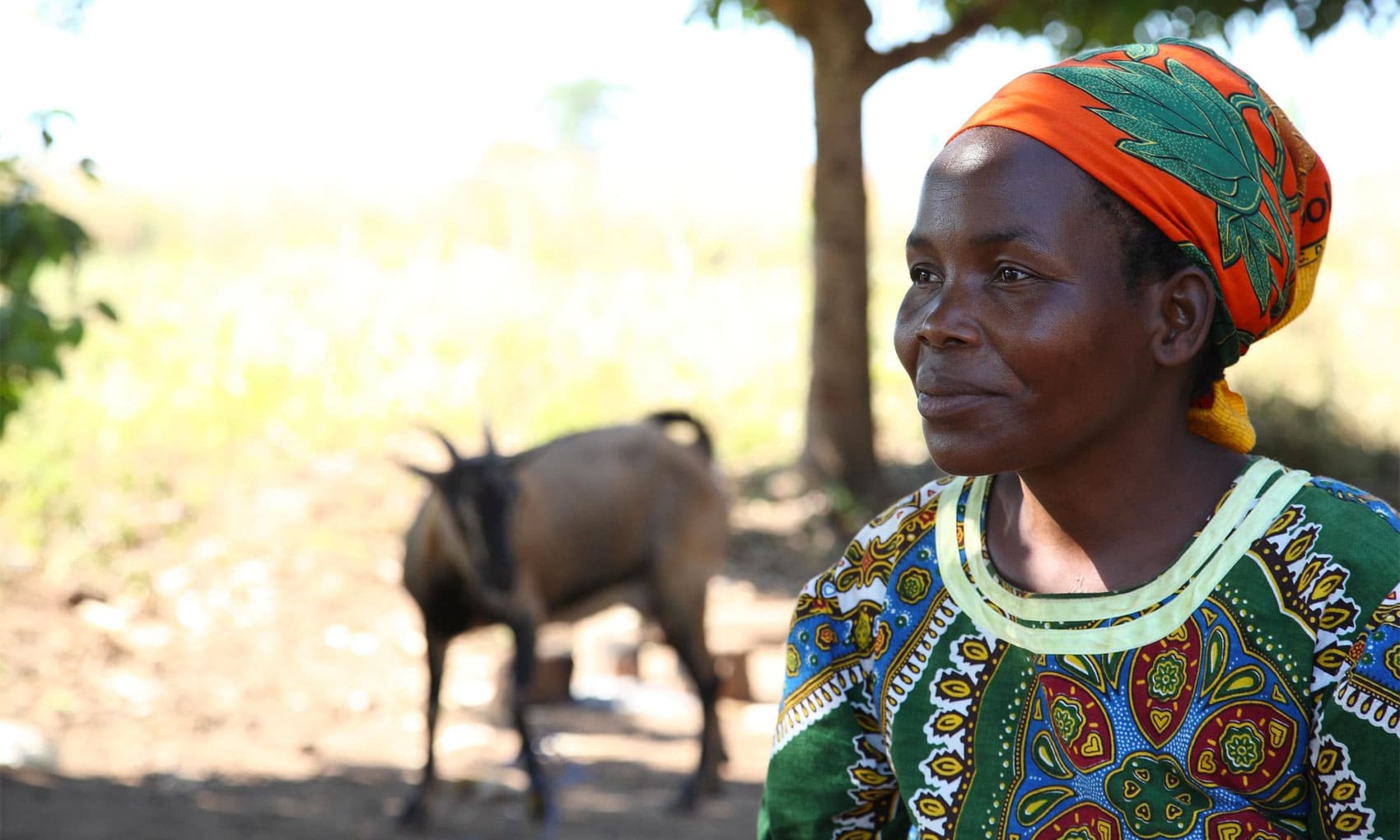Cassava is the third most important food crop in the tropics, after rice and maize. In Asia, cassava serves as a source of food and livestock feed, while also providing raw material for the manufacturing of pharmaceuticals, industrial starch, biofuels, and other products. As a result, cassava is important for rural households and national economies.
The cassava variety KU50, bred by CGIAR scientists at CIAT (now part of the Alliance of Bioversity International and CIAT) and Kasetsart University in Thailand, has been the most successful variety ever in Asia. Released in 1992 in Thailand and in 1995 in Vietnam, the improved variety has proven to be better adapted to a wider range of growing conditions, has less of an impact on soil quality, and has a higher starch content than regular varieties.
The adoption of improved varieties resulting from CGIAR research by CIAT and its partners in Asia has generated benefits worth almost $12 billion over the past 20 years
It is estimated that 1.3 million hectares of KU50 are planted across Thailand using genetic material facilitated by CGIAR’s CIAT genebank, with related economic benefits in Thailand and Vietnam reaching $393.5 million from 1992 and 2010. Farmers’ gross annual incomes have risen by $386 million, or $51 per family in Vietnam and $460 in Thailand, due to increased cassava yields.
As part of the cassava revolution in Asia, the adoption of improved varieties resulting from CGIAR research by CIAT and its partners in Asia has generated benefits worth almost $12 billion over the past 20 years. The return on investment in cassava research in Southeast Asia is very high, reaching an internal rate of return (IRR) of 345% in Vietnam.
CGIAR conserves in vitro the world’s most important collection of cassava germplasm. The cassava collection held in trust at CIAT includes a total of 6,155 accessions from 28 countries, represented in 5,690 clones of (Manihot esculenta) and 465 genotypes of wild species conserved using in vitro techniques.
Header photo: Processing cassava in Quang Binh, Vietnam. Photo by G. Smith/CIAT.


